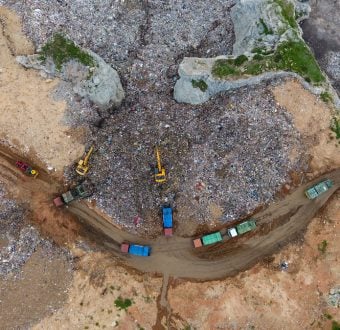Let’s be honest — no one is looking forward to wildfire season in California after what happened in 2020. We were battling COVID, lockdowns and the largest wildfire season in history. More than 4 million acres burned, impacting thousands of homes and businesses and blanketing our sky with unhealthy smoke filled air. It was unbearable for many weeks.
So while pandemic restrictions are lifting and the potential for some semblance of normalcy is finally on the horizon, it is ominous to see news reports of the historic megadrought we now find ourselves in. At time of publication, more than 41 California counties are in a state of ‘drought emergency’ while more than 75% of the whole Western US is in drought. Climate change, rising temperatures, and drought are also now part of the “new normal.” And so are record-breaking wildfires.
In this new normal, the absolute top priority needs to be keeping people and property safe.
First, policymakers must protect communities — provide grants to retrofit homes to make them fire resistant, ensure defensible space to slow the spread of fire in communities, and rethink new development in California’s fire adapted wildlands. They must also provide smoke shelters and additional coping resources to protect sensitive groups from the air pollution that blankets the region. If California can reduce the number of lives and structures impacted by wildfires, it would change the calculus of their human impact.

But we cannot ignore the root cause of why our new normal is so extreme.
It is fossil fuels that are driving the climate crisis — which in turn is making California’s wildfires bigger and faster. This, of course, is on top of the public health burden that pollution from fossil fuels poses to communities living near drilling.
While it isn’t news that the fossil industry is the main driver of the climate crisis, California remains one of the top oil-producing states in the country. So, it’s not enough for our leaders just to believe in climate science: we need them to act on it. That means making changes now to stop extracting the fossil fuels that we can’t afford to burn, and instead invest in a new, just, safe, and equitable energy system that includes a just transition for workers and communities most impacted by the fossil fuel industry.
Want to learn more about other root issues behind the climate crisis and California’s wildfires, including how the logging industry is making communities less safe? Check out this blog post, What Should We Know About Wildfires in California.
As Governor Newsom responds to 2021’s wildfires and prepares for tomorrow’s challenges, he must chart a path to a more just, resilient, and sustainable energy future for California. Tell Governor Newsom to stop fueling the flames by committing to clear and urgent action to phase out climate-warming fossil fuels.
If a fire is burning near you right now
- Identify evaluation areas at CalFIRE
- Find shelter and resources at Red Cross
How to protect yourself, your loved ones, and your community

While individual behavior change alone will not solve the fossil fueled climate crisis, when it comes to keeping yourself safe from wildfire impacts, individual actions can make a big difference. This year, as we emerge from a devastating pandemic and last year’s record-breaking wildfire season, many Californians will again be forced to deal with the immediate task of safety and survival.
We’ve compiled both a full guide and quick tips to help you respond, stay safe and mitigate impacts on you, your loved ones, and your community.
2021 Wildfire & Crisis Emergency Response Guide
Quick Tips
Here’s how you can breathe safely:
- Monitor local air quality.
- If you smell smoke, stay indoors & close the windows.
- Get an HVAC or HEPA filter, or make your own.
- Wear a N95 mask outdoors.
- Monitor hot spots, wind patterns and precipitation possibilities to anticipate poor quality days.
Here’s how you can prepare if you’re in a wildfire-prone area
- Prepare your Emergency Supply Kit.
- Sign up for Cal Fire active wildfire updates.
- Have a Wildfire Action Plan.
- Create a buffer between your home and trees, grasses, shrubs. Help may be available to those physically and financially unable to ensure the 100 feet of defensible space required by law.
Here’s what you can do to prepare for blackouts
- Sign up for alerts from your local utility.
- Get a back-up charger for your phone.
- Don’t forget that emergency supply kit!
- Check out these tips for staying cool & conserving power.



